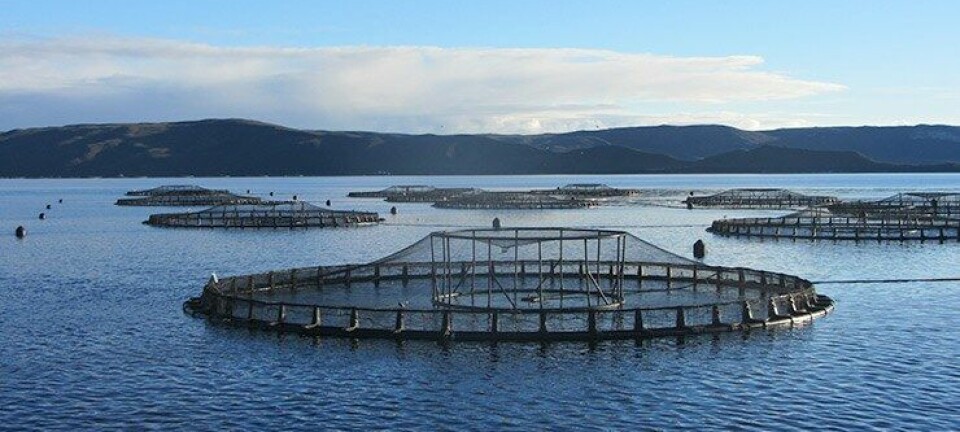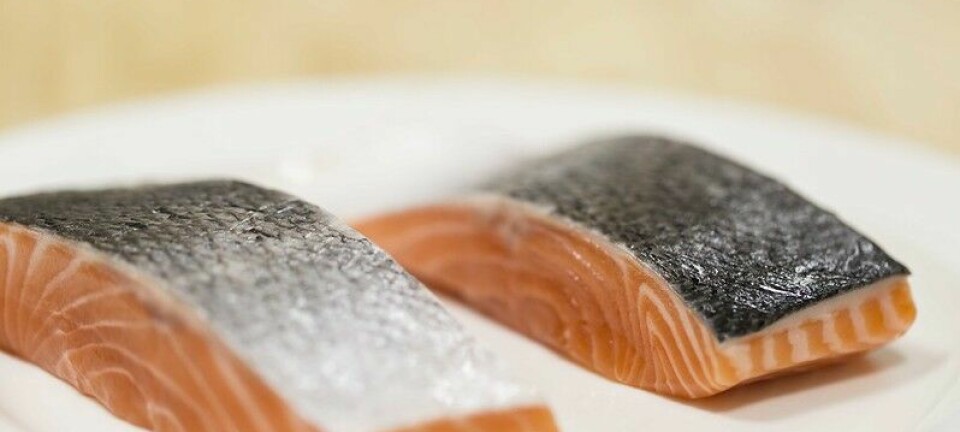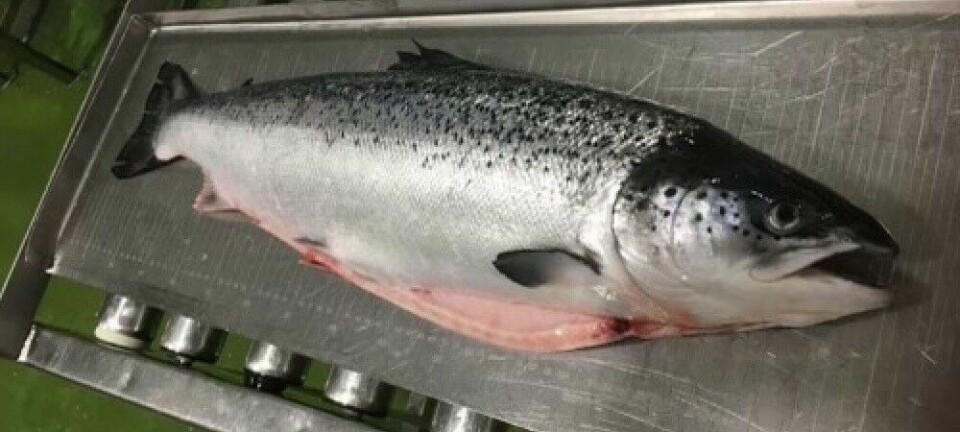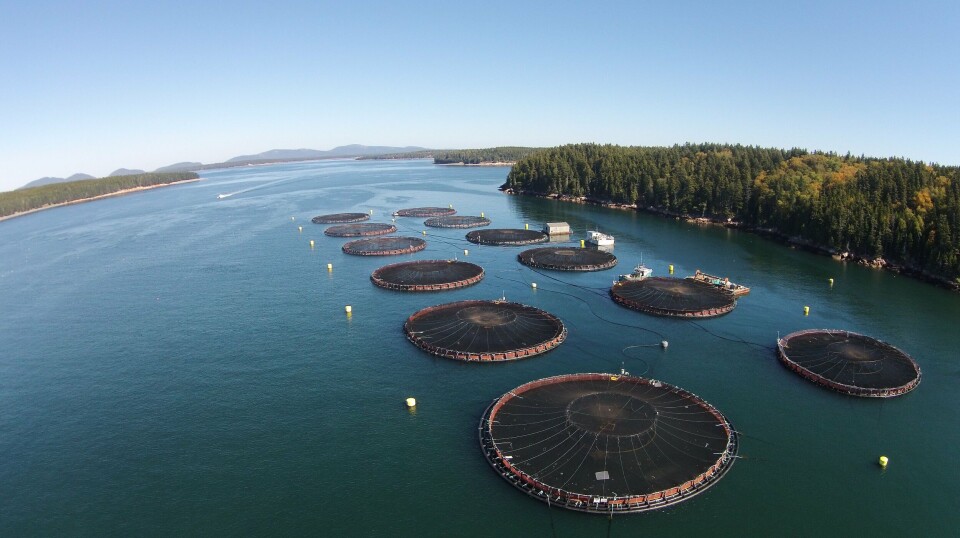
Aquaculture is worth $4bn a year to the US, say economists
But it can be much more if brakes are taken off the sector, write report authors
Aquaculture production in the United States makes an economic contribution of around $4 billion (£3.135bn) annually with more than 22,000 jobs supported each year, analysis by a team of economists shows.
But that could be substantially increased if regulatory constraints can be streamlined and implemented in a more timely and efficient manner, conclude the authors of the paper, “Economic contribution of US aquaculture farms”.
The analysis was funded by the National Sea Grant Programme, which is administered by the US Department of Commerce’s National Oceanic and Atmospheric Administration (NOAA).

According to the analysis, the labour income and value addition were approximately $1 billion and $3 billion respectively. The economic output multiplier across all US aquaculture production was 1.73. In other words, every $1.00 spent in the aquaculture industry generated an additional $0.73 in the US economy. Nearly all (96%) of economic sectors in the United States were supported by US aquaculture, with the majority of this contribution occurring in the rural economies where most aquaculture farms are located.
$877m cost of bureaucracy
However, the study revealed, through a series of regulatory cost studies, that the regulatory framework in the United States has resulted in loss of access to markets, lost business opportunities, and thwarted attempts to expand farming businesses to meet demand for US aquaculture products.
Total lost revenue, adjusted for coverage across the US, was $507 million in foregone direct economic output from US aquaculture. Utilizing the 1.73 multiplier, the foregone economic contribution of US aquaculture is $877m with more than 3,629 jobs estimated to have been foregone due to regulatory constraints on aquaculture.
The only previous national estimates of the economic contributions of US aquaculture are nearly 30 years old. The current study was based on comprehensive data from detailed farm-level surveys that captured 77% of the total value of US aquaculture, supplemented by information from publications on the remaining aquaculture sectors. The economic contributions measured in the study were limited to those at the farm level and do not include subsequent impacts that occur as farmed products move through processing, distribution, food service, and retail sectors in the US economy.
Freshwater farms
Food fish farms generated the greatest contributions to other economic sectors, followed by mollusc farms. Freshwater aquaculture farms contributed twice that of the contributions of marine aquaculture because of the greater size of the freshwater aquaculture sector. Growth of both freshwater and marine sectors would increase overall contributions to the economy, said the authors.
The authors said the total economic impact of US aquaculture
production is likely three to four times greater than the farm-level impacts
estimated in the study due to impacts that occur as aquaculture products move
downstream through various marketing channels. Additional research is needed to
measure the impacts of US aquaculture products in the processing, distribution,
food service, supermarket, and restaurant levels of the marketing chain to
fully capture the total economic contributions.
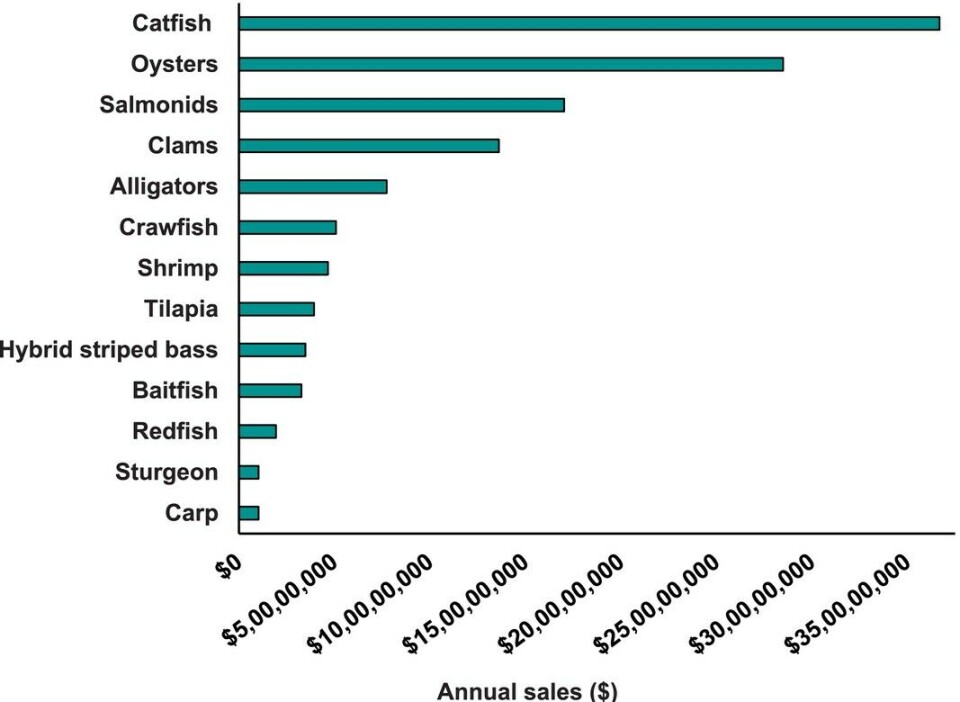
The foodfish category included five of the top ten aquaculture species in the US. Of these, catfish is the largest, salmonids the third-greatest, tilapia eighth, hybrid striped bass ninth, and redfish 11th, respectively.
Of the 22,000 jobs supported, nearly 16,000 jobs were from direct impacts, more than 2,000 jobs from indirect, and more than 4,000 jobs were from induced economic activity. The employment multiplier was 1.42, indicating that 0.42 additional jobs were supported for every direct job in US aquaculture.
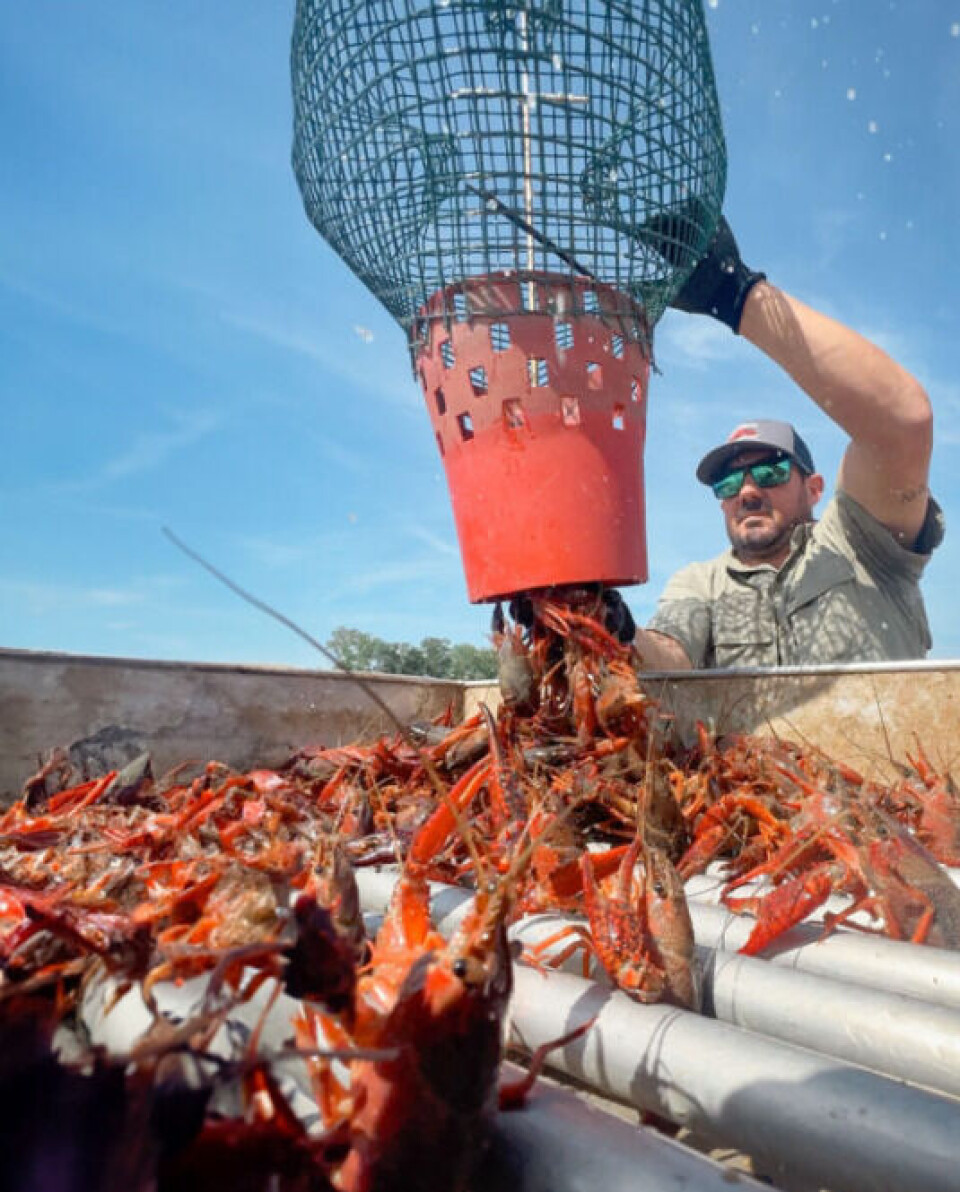
The crustacean category provided the biggest multiplier (1.61) , followed by molluscs (1.48), miscellaneous (1.41), food fish (1.4), and baitfish, sportfish, and ornamentals (1.27), differing by only 0.34 across the categories.
Power consumption
Of the 15 economic sectors that received the most money from aquaculture, electric transmission and oilseed farming sectors benefited most from food fish farms. This was due to
expenditures on electricity for aeration in ponds and pumping in recirculating
aquaculture system (RAS), and the use of largely soybean-based feeds.
The economic output from crustacean farms provided the most support to retail gas stations, likely as a result of expenditures on fuel. Crawfish are harvested in boats by baiting into relatively small traps that need to be checked frequently to remove crawfish and to add fresh bait.
Shipbuilding and repair that was among the sectors supported by mollusc growers.
Regional impacts
The economists said that a limitation of the study is that the survey data that underlie the analysis do not allow for explicit comparison of regional economic effects. Examples include key clusters of catfish in Mississippi, Alabama, and Arkansas, trout in Idaho, northern California, Pennsylvania, North Carolina, and Wisconsin, salmon in Maine, tilapia in south Florida and southern California, ornamentals in Florida, baitfish and sportfish in Arkansas, redfish in Texas, and hybrid striped bass in North Carolina.
“The concentration of aquaculture clusters in specific areas can result in substantial economic contributions to those counties and communities.”
Streamlined process
The authors concluded: “The current size and economic contributions of US aquaculture could be substantially greater than its current size if regulatory constraints would be streamlined and implemented in a more timely and efficient manner. Development of clear property rights and permitting processes for marine waters would support growth of marine aquaculture, particularly of marine finfish that would benefit coastal communities and working waterfronts.
“Given the aquatic resources of the United States, both freshwater and marine, there is substantial potential for growth of US aquaculture that would enhance its economic contributions to communities and consumers across the United States.”











